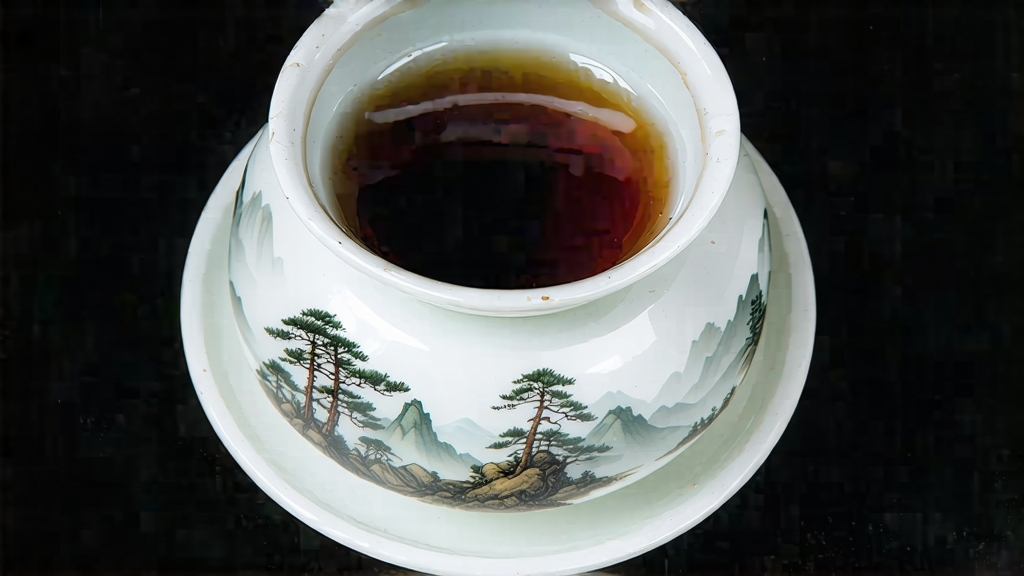
Ask most tea lovers to name a Chinese black tea and they will answer “Keemun” or “Yunnan Gold.” Few realize that the very first black tea ever created—Lapsang Souchong—still rises from the same mist-wrapped cliffs of northern Fujian where it was born four centuries ago. Smoky, wine-dark and laced with the scent of pine resin, this leaf rewrote the story of global commerce, inspired the Earl Grey blend and today offers the adventurous drinker a direct sip of 17th-century craftsmanship.
-
A Leaf from the Wuyi Spine
The Wuyi Mountains are a 60-kilometre granite spine that divides the Min River from the Jiangxi plateau. Basalt boulders, subtropical fog and a 1,200-metre elevation create a diurnal swing of 15 °C—perfect for locking aromatics inside slow-growing leaves. Local tea makers speak of “rock bones and floral hearts,” the mineral backbone that carries the perfume of azalea and cinnamon orchids. It was here, in the village of Tongmu Guan, that fleeing Ming soldiers supposedly accelerated the drying of freshly picked leaves over available pinewood, accidentally inventing black tea around 1568. Dutch merchants carried the new “bohea” to Europe in 1604; by 1669 the British East India Company listed “Lapsang Souchong” as a separate commodity, priced above silver by weight. -
From Tongmu to Tan Yang—Two Families, One Style
Strictly speaking, only tea from the 680-hectare Tongmu Nature Reserve may be called Zheng Shan Xiao Zhong (“Original Mountain Small Sort”). Leaves picked above 800 m are processed in small workshops whose walls are blackened by decades of pine smoke. Twenty kilometres south, the Tan Yang village cluster produces Wai Shan Xiao Zhong (“Outside Mountain Small Sort”), using the same cultivars—Xingcun Xiaoye, Qizhong and Wuyi Caicha—yet fired with a lighter smoke profile. A third, modern “unsmoked” style, called Zheng Shan Xiao Zhong Qing Xiang, omits the final pine phase, yielding a honeyed liquor reminiscent of dried longan. All three, however, share the same plucking standard: one bud, two leaves, taken when the second leaf is still half-curled, what locals call “sparrow’s tongue.” -
Crafting Smoke Without Haste
Harvest begins on the first clear morning after Grain Rain. Leaves are withered on bamboo screens set 1.5 m above smouldering pine embers for six to eight hours; the temperature is kept below 30 °C so the leaf cells remain alive while moisture drops from 75 % to 45 %. Rolling follows, 70 minutes of alternating light pressure and release that ruptures 35 % of cell walls, initiating oxidation. The leaf is then piled in 5 cm layers inside wooden boxes lined with wet cloth; here, at 26 °C and 85 % humidity, catechins convert to theaflavins, turning the leaf a coppery rust. The critical smoking phase comes last: baskets of tea are slid into a brick oven whose floor is covered with a 20 cm layer of Masson pine and Chinese red pine roots, aged three years for lower resin and higher aromatic oils. A 90-second burst of 80 °C smoke is followed by 30 minutes of resting; the cycle repeats eight times over the next 18 hours. Master Chen Qinglong, 72, judges readiness by sound: when the crackle of a handful of tea resembles “pine needles walked upon in late autumn,” firing stops. -
Brewing the Campfire in a Cup
Traditional gongfu service demands a 120 ml gaiwan and 5 g of leaf. Rinse with 95 °C water for three seconds to wake the leaf; discard. First infusion: 10 seconds, water just off the boil. The liquor emerges the colour of late-sunset garnet, releasing aromas of smoked apricot, pine sap and a whisper of lapsang orchid. Second infusion: 15 seconds—here the sweetness peaks, a caramel note akin to crème brûlée. By the fifth infusion the smoke recedes, exposing a mineral core reminiscent of Wuyi rock oolong. Western drinkers may prefer 3 g per 250 ml mug,